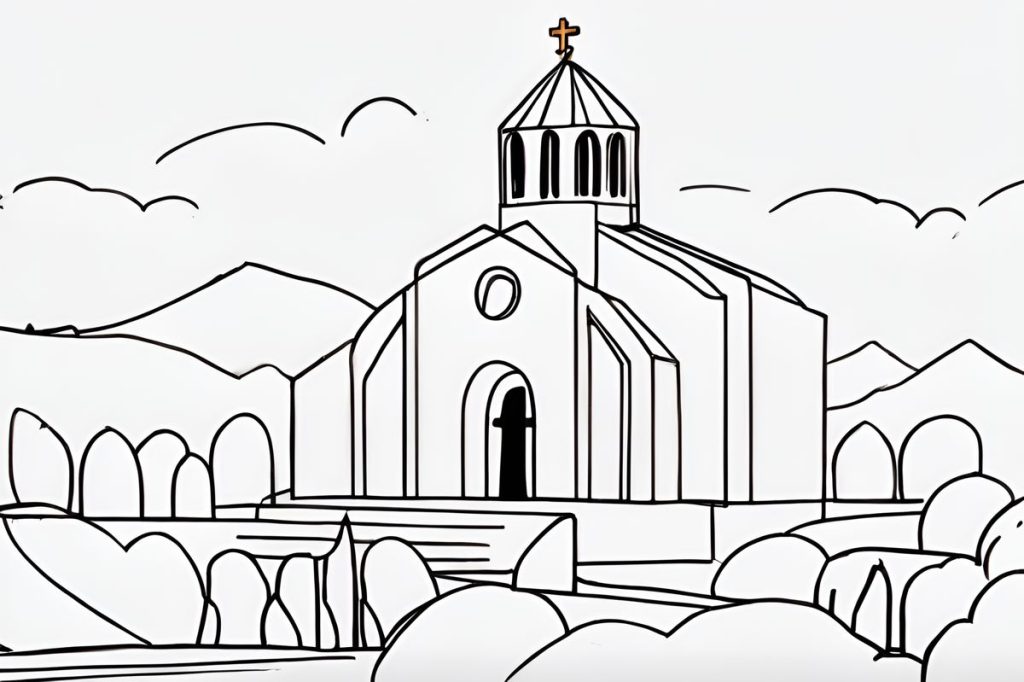Kormakitis, the Cypriot village known for its Maronite heritage and use of the rare Sanna language, stands out for its rich cultural tapestry and commitment to preserving linguistic traditions. From its historical Catholic church architecture to the village’s vibrant community spirit, Kormakitis offers a glimpse into a unique world untouched by the island’s usual political divides.
What is unique about the Cypriot village Kormakitis?
Kormakitis is a unique Cypriot village known for being the spiritual home of Maronite Cypriots and its use of the Sanna language, a rare form of Cypriot Maronite Arabic. It stands out for its cultural richness, historical Catholic church architecture, and the commitment of its community to preserving their linguistic heritage.
Exploring Kormakitis: A Maronite Enclave
In my travels across Cyprus, I’ve encountered the island’s rich tapestry of history and culture. From the historic city of Paphos, celebrated as a European Capital of Culture, to the wild donkeys roaming in Karpasia and the vibrant Limassol carnival, my experiences have been nothing short of enlightening. I’ve been privy to the Naqshbandi rituals in Lefka and reveled in the island’s diverse offerings. Yet, for all my explorations, the Maronite village of Kormakitis in the northwest remained uncharted territory until a recent weekend excursion.
Kormakitis is a quaint village of approximately 300 inhabitants nestled where the Kyrenia coast meets Morphou bay. This village piqued my interest due to its significance as the spiritual home of Maronite Cypriots—an ethnoreligious group indigenous to Cyprus. Historically, Kormakitis was the most populous Maronite settlement, unique in its use of the Sanna language, a form of Cypriot Maronite Arabic. Despite the island’s division following intercommunal strife, a coup d’état, and invasion, Maronite Cypriots retain a distinct identity, far removed from the Greek Cypriot majority.
The Linguistic Heritage of Sanna
The Cyprus Bilingualism Association and the Cyprus Linguistics Society hosted an event that included a visit to Kormakitis, showcasing the village’s linguistic rarity. We departed from Nicosia and journeyed through scenic meadows near Skylloura, past Myrtou and Diorios, catching glimpses of the Mediterranean before arriving at Kormakitis, with its remarkable Catholic church standing out against the landscape.
The church’s architecture diverges from the typical domed Orthodox churches and mosques found across Cyprus, featuring angular, cuboid bell towers and a pointed façade constructed of yellow sandstone. Inside, the white walls and golden altar adorned with Syriac script, frescoes, and statues, including Saint George vanquishing a dragon, exude an aura of sanctity and tradition.
The visit continued to the Kormakitis Centre of Cooperation (KCC), where we indulged in local halloumi, olives, and bread while learning about Sanna. Antonis Skoullos, chairman of the KCC, detailed how Sanna evolved over a millennium from an Arabic derivative brought over from Mesopotamia around 1,200 years ago. Sanna is not merely a relic; it remains a living language, albeit with a dwindling number of native speakers, predominantly among the older generation.
A Glimpse into Maronite Culture
After a Sanna language quiz, highlighting the community’s commitment to preserving their linguistic heritage, we visited the village’s sparse tulip fields and the central coffee shop, embodying the essence of Kormakitis. The shop, with its wooden ceiling, cream and green walls, and gingham-clothed tables, displayed images of religious leaders and influential figures, providing a window into the village’s soul.
In this haven, untainted by the prevailing Greek-Turkish dichotomy that has shaped Cypriot politics and identity, Kormakitis reveals its true character. It’s a place where the simplicity of life reflects the island’s authentic spirit, as recounted by the tales of my grandfather. The village’s allure lies in the contrast between its unique aspects and its quintessential Cypriot atmosphere.
Drinking coffee and engaging in casual conversation, we experienced the timeless Cypriot tradition of a leisurely Sunday, a testament to the shared cultural practices that transcend language and community boundaries. It is precisely these shared moments that define the essence of Cypriot life across the island, irrespective of one’s mother tongue or heritage.
What is the significance of Kormakitis in Cyprus?
Kormakitis is significant in Cyprus for being the spiritual home of Maronite Cypriots and for its use of the rare Sanna language, a form of Cypriot Maronite Arabic. The village stands out for its rich cultural heritage, historical Catholic church architecture, and the community’s dedication to preserving their linguistic traditions.
What is the Sanna language and why is it important?
The Sanna language is a rare form of Cypriot Maronite Arabic that has evolved over a millennium from its Arabic roots brought over from Mesopotamia around 1,200 years ago. It is significant as it is a living language, albeit with a declining number of native speakers, primarily among the older generation in Kormakitis. The language showcases the unique cultural identity of the Maronite Cypriots and their commitment to preserving their linguistic heritage.
How does Kormakitis differ from other villages in Cyprus?
Kormakitis differs from other villages in Cyprus due to its Maronite heritage, the use of the Sanna language, and its historical Catholic church architecture. The village’s cultural richness, vibrant community spirit, and commitment to preserving linguistic traditions set it apart from the usual political divides found on the island.
What can visitors expect to experience in Kormakitis?
Visitors to Kormakitis can expect to experience a unique cultural enclave with a rich history, including exploring the village’s historical Catholic church, learning about the Sanna language, indulging in local cuisine such as halloumi and olives, and engaging with the community to gain a deeper understanding of the Maronite culture and traditions.

